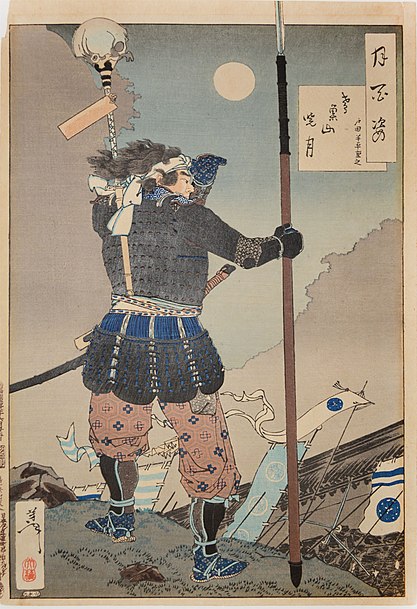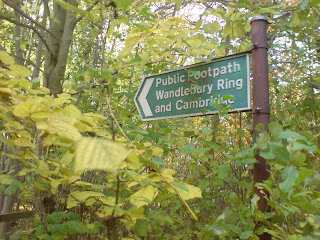I have been exploring my breathing. This is a huge area, so consider this article an introduction.
Breathing methods and practices are widespread and varied. Breathing can be automatic or controlled, and is widely believed to connect the body and the mind: Many people take a few deep breaths to help calm themselves; counting breaths is a popular meditative practice, as is observing one's breathing;
Pranayama -- breath control -- is a significant part of yoga. Going in the other direction: If you start to panic you may find yourself taking shallower breaths, and possibly hyperventilating.
Specialized breathing techniques are also widespread in the martial arts. There are many different -- and conflicting! -- approaches to training and becoming aware of your breathing.
Caution: You do not want to mess up your breathing. Becoming aware of your breathing patterns in different situations would seem to be a reasonably benign step to take; forcing significant changes on yourself, more risky. Take care.
My approach to this topic consists of background reading, asking questions, and a degree of observation of myself and others.
Modes of breathing
There is more to breathing than inhalation and exhalation. Let's look at some of the different aspects.
I am aware of two very natural modes of breathing:
- Abdominal breathing: This is what babies and young children do when they rest on their backs. As they inhale, the abdomen expands; as they exhale, it contracts. By comparison, the chest does not rise and fall noticeably.
- Reverse breathing: When I cough -- or growl or kiai or sing (loudly) -- my abdomen expands during the accompanying exhalation. This is the exhalation part of reverse breathing. On the inhalation the lower abdomen contracts, but as with abdominal breathing, the chest does not dramatically inflate.
These are by no means the only possibilities. To take another example, if you always keep you stomach pulled in, neither of these modes will be available to you, and the expansion / contraction will be largely confined to your chest.
My take is that abdominal breathing is good and natural for relaxation, and reverse breathing for exertion.
Rather than consciously controlling these patterns, I simply try to be aware of them during training.
For example: In jiu-jitsu and judo classes we recover on our backs between warm-ups in a position similar to yoga's
corpse pose, but with our eyes open and arms at right-angles to the torso. You can tell if you are doing abdominal breathing by feeling your belt tighten on the inhalation and loosen on the exhalation.
Nose or mouth?
A normal person can inhale and exhale through both the nose and mouth. Surely there is a situation in which each combination is appropriate. However, in the martial art styles that I practice we advocate inhalation through the nose and exhalation through the mouth, for training and self-defence. The question is
why? I cannot be definitive, but
- In-through-the-nose is generally slower and steadier than in-through-the-mouth, and the nasal hairs and passages provide a degree of filtering and warming of the incoming air.
- Although out-through-the-nose is slow and steady -- hence good for relaxation -- out-through-the-mouth can also be slow and steady when you touch the tip of your tongue to the roof of your mouth, and I find that it is easier for the body to switch to reverse breathing when exhaling through the mouth. Certainly a kiai demands a mouth exhalation.
This is what I do in training, but at other times I find myself reverting to nasal inhalation while relaxing, and mouth inhalation during periods of intense exertion, and when I have a blocked nose!
Other pointers
Holding your breath is a good idea while diving, but not while taking impact. For example, in jiu-jitsu and judo we train to exhale when executing a breakfall. This is only natural: The air will be driven out anyway, so you do not want to fight it.
You really do not want to be struck while inhaling or holding your breath, so by extension having very apparent breathing is not good in combat against a sophisticated opponent.
Breathe through your feet!?

A helpful tip that I picked up from Philip Starr's book,
Martial Mechanics, is handy when practicing stance training -- such as
holding a horse stance -- for an extended period:
As you breathe, imagine that you are inhaling up from your feet into your abdomen, and exhaling the same way. More specifically, the point on your foot to focus on is the
yongquan point (see left).
I find that this helps me to gently relax into the stance, helping me to release tension and sit more solidly. It also hints at the potential power of combining visualization techniques with breathing.
Other places to look
For self-exploration and observation:
- Place your hands on various parts of your torso -- stomach, chest, front, back, sides -- while engaging in different activities and motions.
- How does your breathing in-flow and out-flow coordinate with different physical actions?
Further reading:
- Philip Starr's Martial Mechanics (mentioned above) has a good chapter on reverse breathing and some of its applications in the Martial Arts.
- There are many Feldenkrais lessons that include gently explorations of breathing, and there practice should lead to breathing that adapts well to the situation. I would start with Feldenkrais's Awareness Through Movement or Shafarman's more accessible Awareness Heals.
- Systema, the Russian martial art, is built on explicit breathing practices. See Vasiliev's Let Every Breath... Secrets of the Russian Breath Masters.
- Lastly but not leastly, for a book that explores the function, practice and anatomical basis of breathing, look no further than Calais-Germain's amazing Anatomy of Breathing.
The title of this post -- Smile, breathe, and go slowly -- is a quote from the highly quotable (and readable) Buddhist monk Thích Nhất Hạnh. Words to live by.
And remember, keep breathing!












































